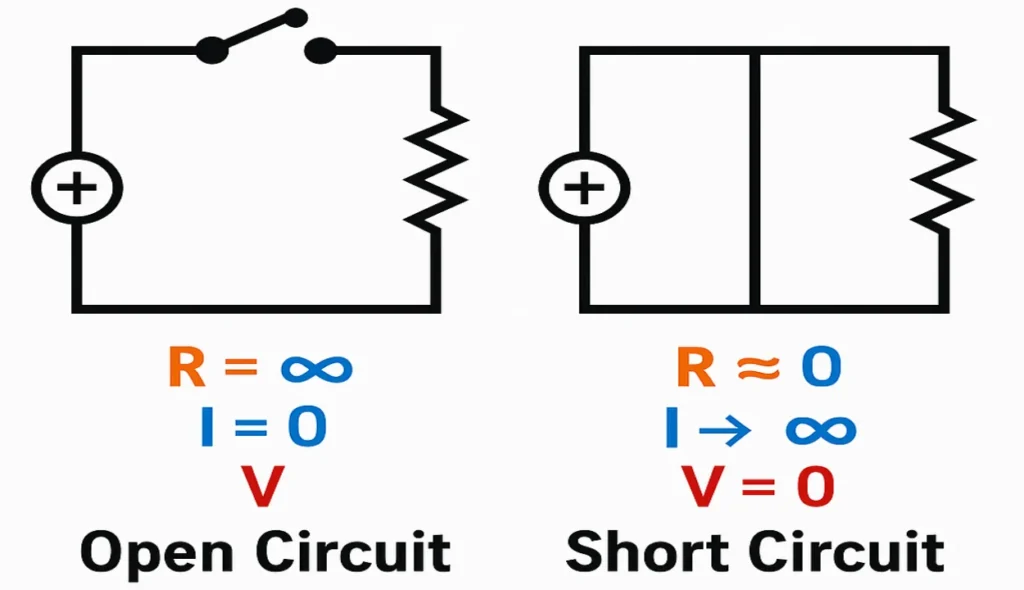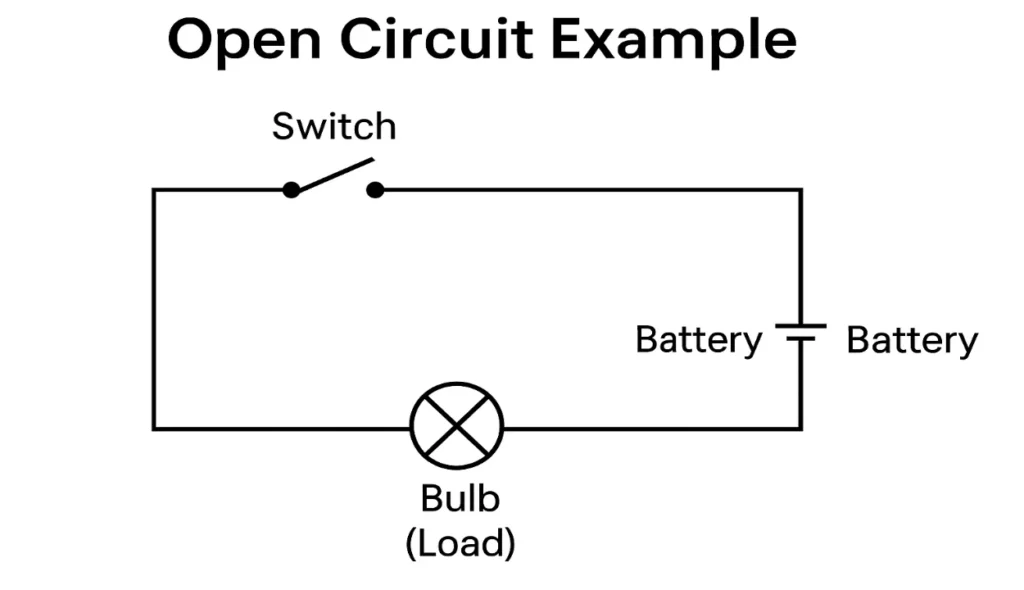Introduction
As an electrician and long-time enthusiast of electronics, I’ve often come across the frustration of devices not working—only to find that an open circuit was the real issue. When the flow of current is disrupted due to a broken connection, faulty component, or loose wiring, lights stop turning on and functionality is lost. By identifying these issues early and using proper troubleshooting techniques, we can restore the function of systems and minimize maintenance needs. I always refer to clear schematics and quality parts to ensure long-term resistance against failure.
Whether you’re an aspiring builder or just curious about real examples, understanding how power travels from source to load, and how a short or open path affects the impact, is the foundation of safe, effective electrical work.
What is an open circuit?
When I walk into a room and the lights don’t turn on, I immediately check if the switch is off or if a breaker has tripped. On countless occasions, the path is just disturbed, which leads to the suspension of the current and the construction of an open circuit. This is the case in a number of circumstances. This can happen intentionally, like when a switch is turned off, or unintentionally, such as when a fuse blows or a breaker shuts things down.
In the electrical industry, we often use the terminology “opened” or “opening” to describe what operates inside a circuit when it becomes incomplete. A great example is when too much electricity flows through and the system shuts off to protect the line. It’s normally a small positional change that creates a big impact in keeping systems safe and closed when needed.
Open Circuit Resistance
In an open circuit, the value of I is equal to zero since there is no flow of current being carried across the circuit. According to Ohm’s law, this results in infinite resistance. The equation becomes R = V / 0, meaning any value of voltage across a resistor results in R = ∞ under this condition. This behavior is proportional and consistent in open circuit conditions, as defined by electrical laws and theory. You can also read about dc voltage.
Open Circuit vs Short Circuit
In electrical engineering, one of the first concepts you learn is the difference between an open circuit and a short circuit. These two configurations behave in opposite ways, even though both involve the connection of two terminals. It’s a common question I hear from beginners trying to grasp the basics of circuit behavior.
An open circuit means no current is passing, so resistance becomes infinite, and the voltage stays at the supply level across the components. On the other hand, a short has a very high current flow, low or zero resistance, and ideally zero voltage drop. But practically, even shorts show some resistance, and the amount of current depends on the path created.
A close condition occurs in a normal running circuit, where current flows from negative to positive polarity. This path must be created properly for everything to work. I’ve seen circuits fail simply because a small mistake in polarity disrupted the flow, even though all other components were correctly placed.

Open Circuit Example
A real example of an open circuit is when a switch is left open, creating a break in the path of current flow. Because the circuit is open, the current cannot flow through the loop, so the bulb remains off. This condition is usually caused by breaking the conductor or leaving the terminals disconnected.
If the switch is closed, the battery sends current through the load, like a bulb, and things work normally. But if the positive and negative terminals are directly connected with no resistance, it causes a short circuit and a high amount of current to flow. You can often spot this setup in a simple diagram or figure when learning about circuit behavior.

Conclusion
As someone who has worked with many electrical systems, I’ve seen how a simple break or loose connection can cause non-functional devices. By understanding the importance of identifying the causes, we can prevent failures and avoid larger risks. Using proper tools like multimeters makes troubleshooting and locating the path of the current much easier.
Professionals rely on systematic techniques to address each challenge and resolve problems effectively. When components or wires are broken, it may lead to fires, damage, or overheating, so quick action is critical. A clear concept of electric flow and the significance of safety helps us all work more proactively and ensure reliable equipment and electronics.
FAQs
What is the meaning of short circuit?
A short circuit occurs when electrical current takes an unintended low-resistance path, often bypassing the load, causing excessive current flow that can lead to damage or fire.
What is OCV in a battery?
Open Circuit Voltage, also known as OCV, is the voltage of a battery when it is not connected to any load or circuit, which indicates that there is no current flowing through the battery being measured.
What is an open series circuit?
The term “open series circuit” refers to a situation in which there is a break in a series connection. This interruption prevents the passage of current through any of the components, hence rendering the whole circuit inert.
What is a closed series circuit?
A closed series circuit has a continuous path with all components connected properly, allowing current to flow through each one without interruption.


